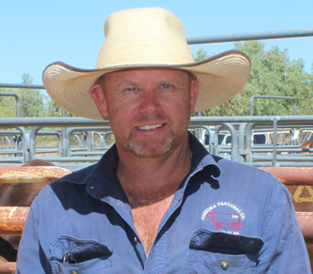Top tips for buying bulls to boost herd reproductive performance
26 May 2023
|
Chris Morrow from ‘Nerrima’ Station Location: West Kimberley |
Here, beef producer Chris Morrow (pictured) from the Kimberley discusses how he is buying bulls to boost the reproduction rate of his herd.
Chris Morrow manages ‘Nerrima Station’ and when he makes bull buying decisions, he focuses on herd fertility and growth.
According to Chris genetics is an important part of their strategy to take on different market opportunities.
“It has given us an animal with better fertility that’s suitable for export and the domestic market down south,” Chris said.
Working with a processor in southern WA, Chris and his team get feedback on their carcases that they can then use in their selection.
Chris uses BREEDPLAN to look at bulls that will meet their requirements and uses the BULLCHECK soundness evaluation.
“At Nerrima we use controlled mating with three calving groups but we want to bring this back to two calving windows to better align the herd’s nutritional requirements with the rainfall/growth periods,” Chris said.
Around 80% of the herd at Nerrima calves in the October to December ‘ideal’ window and their objective is to increase weaner weights and condition scores.
“We put bulls out in early February to get calvers closer to the green date and reduce calf losses over the dry,” Chris said.
To maintain reproductive performance Chris weans early, has a dedicated weaner feeding regime and segregates mobs based on nutritional needs.
Chris uses their own helicopter with contract chopper pilots when needed for management and focuses on good fencing to reduce the risk of unwanted bulls in the herd which could impact their genetic progress.
“We have a data collection system that provides information on all our animals from weaner induction and throughout their lifetime,” Chris said.
“All breeder females are preg-tested and we use the system to keep track of animal health and average daily live weight gain.
“One of our key herd performance indicators is the pregnancy detected to weaning percentage rate in our breeders.”



